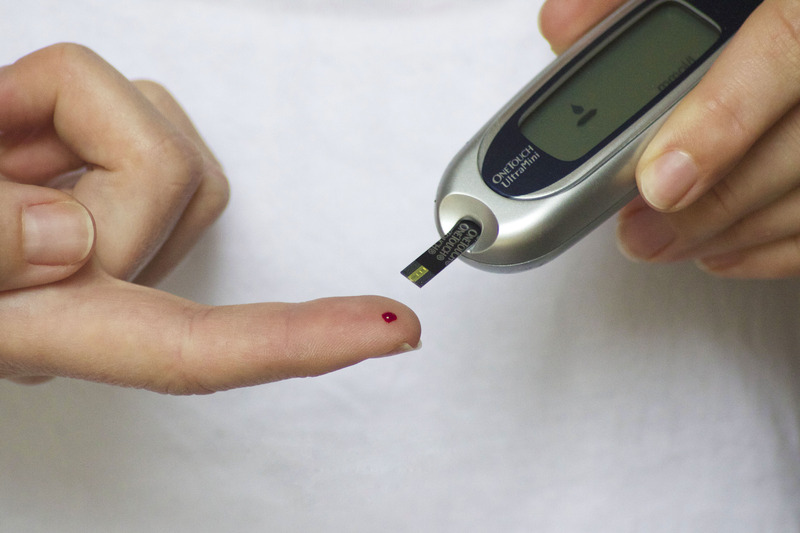The term diabetes “a Greek word” was coined by Araetus of Cappodocia about 81-133AD, while clinical features similar to those of diabetes were described 3000 years ago for the first time by the ancient Egyptians. Here, find out the comprehensive analysis of diabetes mellitus, its diagnosis, and improved treatment methods.
What is Diabetes?
Affecting millions of people in the world, diabetes is a complex metabolic disorder characterized by persistently high levels of blood glucose. The elevated concentrations result from the autoimmune destruction of B-cells in the pancreas or insulin resistance. About 90 percent of all cases are type 2 which is mostly a lifestyle disease, while a 10 percent of the cases are type 1. First, understand that your body derives its energy from sugar normally broken down from the food you eat. Diabetes is a condition that affects insulin, the hormone responsible for helping your body use the sugar broken down from food.
If you have type 1 diabetes, your body is not able to produce insulin. With type 2 diabetes, it produces insulin but is not able to use it efficiently. In simple terms, people with diabetes are either not able to produce insulin or they have it but with the inability to use it effectively.
For this reason, sugars stay in the blood instead of entering the cells to be used for energy. The excess sugar is what results in high levels of blood glucose. High levels of blood glucose can quickly result in severe and even fatal conditions. Should a 37-year-old female, for example, with a records of diabetes in her family develop excessive urination, the blood glucose levels may read 320 mg/dl. If this condition is not controlled immediately, irreversible renal failure may develop. The good news is; today there are advanced methods used to control the sugars and prevent the occurrence of life-threatening conditions.

The History of Diabetes Timeline
Diabetes was first recorded in a medical text in 1425. Thomas Willis, a Briton added the word mellitus to diabetes in 1675. Mellitus is a Latin word which means “honey sweet”. This was after discovering the sweet flavor in the urine and blood of diabetic patients. Diabetics also had syptoms of dry mouth.
In 1776, another Briton, Dobson found out that the sweetness found in the urine and blood resulted from excessive amounts of glucose. He also discovered that in some people the condition was chronic, while in others it was fatal. This is when the difference between type 1 and type 2 diabetes was distinguished. Since its discovery, there have been numerous changes in its treatment.
The History of Diabetes Treatment
Physicians and scientists have documented diabetes mellitus for thousands of years. From its origin to its dramatic discoveries in treatment, numerous brilliant players have taken a role in the history of this condition.
Once the physicians learned more about the condition, they began looking for advanced means of managing it. Exercise was the first prescription. It was believed to relieve the need to urinate excessively. Around 1700s and 1800s, the need to change diet was realized, and patients were advised to consume large amounts of sugar and eat animal fat and meat. The fad diet was introduced in 1900s, including potato therapy, starvation diet, and oat-cure. This was after Apollinaire Bouchardat, a French physician in 1870s noted improved symptoms of his diabetic patients due to food rationing that occurred during the Franco-Prussian war.
Elliot Joslin, a Boston scientist dubbed himself as the world’s leading scientist in 1916, where he then wrote a book titled “the Treatment of Diabetes Mellitus”. The book noted that combining fasting food and exercise would, reduce the risk of deaths in diabetes patients significantly. Today, the book is still used to educate sufferers on lifestyle changes to include in their dairy life for the management of the life-long condition.
In the modern society, there are advanced modes of treatment including new ways of delivering insulin and the introduction of insulin analogs. If a 31-year-old male, for instance, with a history of this lifelong disease has a seizure that stopped prior to ems arrival, you will notice shallow but rapid breathing and a cyanotic skin. Such a patient requires immediate medical assistance for hyperglycemia treatment and ventilatory support.
The Family History of Diabetes Mellitus
If you have a father, mother, sibling, or relative with diabetes, the chances that you could also suffer from it are high. You are also at a high risk of prediabetes. Your doctor should help you prevent or delay the onset of the disease. If you have prediabetes, it should be reversed. If you are Hispanic, American Indian, African American, or Asian American, there is a risk you could develop diabetes. Gestational diabetes and obesity are also risk factors.
Family history is covered in the “International Classification of Diseases, Tenth Revision, Clinical Modification (ICD-10-CM)” coding guide. It features the latest data from institutions including Medicaid Services (CMS) and Centers for Medicare allowing you to research more than 68,000 ICD-10 codes by disease, drug, number, injury, or a certain keyword. Your family history comprises of many factors including environment, genes, and lifestyle. However, having a member of your family with the condition does not automatically mean you will get it.

ICD 10 Code for Family History of Diabetes
The ICD 10 code with records of diabetes and the ICD 9 General Equivalence Mappings (GEMs) give a clear-cut link between the diagnosis codes in the new ICD 10 CM and ICD 9 CM. The approximate flag indicates the relationship between the code in the target system and the source system code. The combination flag shows that more codes are needed to meet the full equivalent in the source system. Lastly, the no map flag shows how a code in the source system has no link to the target system code. To get more details in V18.0 coding guide on family records of diabetes, you can request for a pdf subscription.
Treatment for diabetes have changed over the years with new tools and easier access to information now available. Blood tests for instance can show the presence of diabetes. One of the tests is the A1C. Because health professionals have had better understanding of the condition and its complexity, it is now easier than ever for patients to reverse or live with diabetes.

